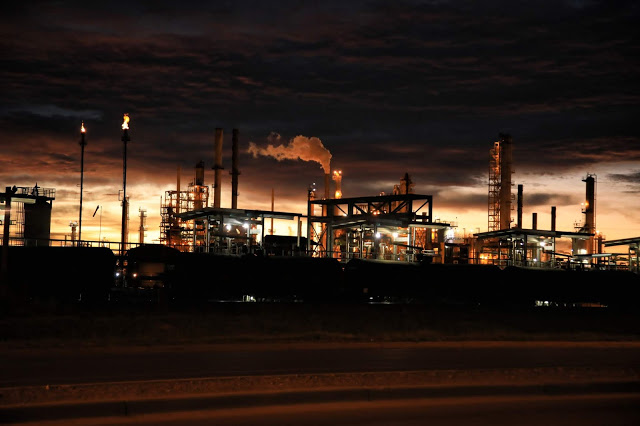
AI & Data
You are no longer just a company of products or services, you are a data company
All companies in operation today are actually data companies. This is because, every day they collect and process a large amount of information: from customers, internal operations, suppliers, partners and competitors... However, many companies are incapable to see this data as an asset of great value to their business. This is despite the fact that "data is the most valuable gift of digitalization to business management". The data a company collects, and potentially should collect, can be used for very specific actions with direct return, such as: Advanced customer segmentation Churn prediction Predictive maintenance of machines Real-time stock management Ppricing optimization... ...and much more. All this is possible with a company's internal data, but opportunities multiply when we also include other external data sources. Turning data into valuable assets Regardless of the sector or area of activity of a company, there are data sources that can offer a really unique value when creating and training algorithmic models to help strategic decision making; this could include meteorological sources, events and work calendars for cities, statistical and demographic data, land registry data and social networks. If human beings are 70% water, companies are 100% data. Organizations seeking to remain relevant today are devoting all their efforts to digitally transform themselves, basing their decisions on data with the incorporation of Big Data and Artificial Intelligence technologies. As if that wasn't enough, upon solving the challenge of digital transformation that many companies face, they do not find themselves at a competitive advantage, but instead on a level playing field with the rest. Photo: Stephen Dawson / Unsplash What really makes a difference is the data you obtain, how you organize it and the strategy for its utilization. So that's the key, and even more so, is the choice of external data sources that can enrich the information you already have. In this way, Telco data becomes very important to companies' corporate strategy. This is due to the large amount of useful information they provide in terms of customer knowledge. AI OF THINGS Big Data and Artificial Intelligence solutions for the tourism industry September 27, 2022 Business insights: mobility, tourism or retail spaces At Telefónica Tech, we understand and classify our Telco data that we can provide to our customers, in an aggregated and anonymized manner. Business insights that allow us to detect behavioral patterns that help us better understand your needs. In this sense, we offer our clients solutions based on their business requirements; We offer Crowd Analytics services in which we can present behavioral patterns on mobility between different locations and cities; even inside retail locations. We also provide Consent-based data services that facilitates the interaction between brands and their consumers. We also offer analytics for fleet management through our IoT services. In-depth knowledge of communications between branches and call centers through our Communications solution. Brands have to gamble on new ways of approaching their consumers, and this is achieved by focusing their efforts on getting to know them better and adapting to their needs and new demands. For this, new technologies play a fundamental role. Featured photo: Joel Filipe / Unsplash AI of Things Smart football stadiums: the world's greatest show, made even better May 25, 2022
April 26, 2023

AI & Data
Transform to Perform: If you have talent in your company, don't let it escape
Cars can't fly yet, but do we need them when we are experiencing a flood of information from all directions? I have always wondered what the traffic lights of the future would look like if cars could pass over us, but I never imagined that the technological revolution would happen more in the digital world than in the physical one. When I was a child, I eagerly waited for the famous flying car to be released on sale, but I was missing something. The changes that were about to come in the technology realm were not to be driven by companies, but by consumer’s needs. It was the new consumer demands that would set all the technological machinery in motion. Society was not asking for flying cars, it was asking for a more efficient transport system. And so, as the years went by, and thanks to the Internet and other advances, we began to have more access to information and consequently our consumption habits changed. Today we demand and expect much more from our brands. They should know who we are and tailor their services to best suit us, not only in price, but in quality. Consequently, companies have had to drastically change their approach to the market and its consumers, not only related to the product or service itself, but even generate new user experiences to aid interaction with the brand. This has been a long process and there is still a long way to go. What is clear is that companies have noticed the benefit of new technologies, such as Artificial Intelligence, to meet those ever-higher expectations of customers. If that was not difficult enough, then another obstacle has been added; it is not enough to have the will to change, you must know how to do it. Are companies prepared to carry out these changes? What exactly does a company need to do to move towards a new way of working and evolve its business model? Without a doubt, it needs to transform itself culturally and for that, it requires a qualified team. Although this statement may seem obvious, the reality is that it is the main challenge facing companies. Finding people with talent and skills in technologies such as Big Data or Artificial Intelligence, capable of leading the digital transformation of the organization is an increasingly complicated task, especially because of the high demand for these profiles and the shortage of them in the labour market. Now, if we are aware that the basis of change is people, then equally management must play a crucial role. What is the next step? Invest and create a new department from scratch with only new recruits? It is certainly an option, but not necessarily the best. Technologies, techniques and processes are changing so rapidly that employees should be valued more for their ability to adapt to the technical requirements asked of them. Otherwise, we may find ourselves in the same predicament when these new tools become obsolete, that we will be left with an outdated team again. So, the key must be to offer timely and quality training to our current teams, whilst of course incorporating new profiles capable of promoting change. In LUCA, we have created an exclusive area to support companies in this sense, called LUCA Academy; where companies gain access to the knowledge and experience of our data scientists, engineers and data architects, as well as business consultants to train your employees in the use of Big Data and Artificial Intelligence technologies. The goal is to help your organization build AI-driven decision making and achieve the most successful digital transformation. In the future, I no longer expect the flying car, I expect it to be intelligent. I hope that every brand I interact with takes advantage of the depth of information to target me in a unique and personalized way. If you want to learn more about how we can help you transforming your company, visit our website
September 4, 2019

AI & Data
Towards the Fourth Industrial Revolution
The customization of mass production is the catalyst for change that, among other things, originates industry 4.0 A lot has happened since the steam engine changed the course of our civilization history with the mechanization of production in the First Industrial Revolution. Scientific advances at the end of the 19th century allowed the Second Industrial Revolution with the discovery of electricity that would be the basis for mass production, followed by a Third Industrial Revolution in the 20th century thanks to the power of information technology and electronics in the automation of production processes. Today, a Fourth Industrial Revolution is brewing, a product of the merge of a series of exponential technologies such as Big Data, Artificial Intelligence, the Internet of Things (IoT), additive manufacturing, augmented reality, among others, which are blurring the barriers between the physical and the digital. A lot is said about this new stage of the industry. Already, large corporations are moving to adapt to the changes that this entail and are beginning to extract benefits around Industry 4.0. Hence, to understand why this revolution is so unique, we need to realize the role we have as individuals in this new paradigm shift. The great difference of the Fourth Industrial Revolution, is that is not a cause of change but a consequence. In the case of the Second Industrial Revolution, it resulted as a consequence of the introduction of mass production. It was the revolution that brought the change in the mode of consumption, while the Fourth Revolution is being forged, to a large extent, as a consequence of the new consumption habits of the people. The customization of mass production is the catalyst for the change that, among other things, originates Industry 4.0. Change in consumption and the manufacturing process The change in consumption means that it is no longer enough for the product to be as cheap as possible, but also that the product must adapt to everything we need as consumers and what we demand according to our tastes. All in one click and with free shipping. And this is precisely the great change that has forced companies to find more agile and fast solutions that respond to their customers, now hyperconnected, accustomed to booking a flight, asking for a taxi or making a payment, all remotely. From the point of view of the industry, the change not only consists of the eternal quest to save production costs, but to respond personally and quickly to their consumers. The solution has been found in the digitization of everything; from design to manufacturing. Digitization brings a key fact; with all being connected, an infinite amount of data is generated, extremely useful to know more and better both, the production chain and the customer. Therefore, having an impact not only improving the operational efficiency but also the generation of new revenues towards the final consumer. Previously, if a problem arose during the manufacturing process, the whole production chain had to stop to evaluate where the problem was, to fix it, and start it up again. This involved substantial economic losses for every minute the production chain was stopped. The same thing happened when some maintenance of the machines had to be done, always with fixed dates and without taking into account whether it was really necessary or not. Now the new connected industry would prevent the processes from stopping. If everything is communicated, and information is available in real time, we are able to modify actions and predict failures before they pose a real problem, causing to stop the production process. Thanks to Big Data technologies we are able to carry out predictive maintenance of machines and processes, thus guaranteeing greater efficiency within the industry. But not so fast ... Of course, these changes do not come with insurance at all risk, and therefore we must pay the consequences of automation; employment. According to the study "World Bank Development Report (2016), machines could replace 57% of average jobs in OECD countries, 69% in India and up to 77% in China. Therefore, it affects more, those countries where traditional industry has a leading role. Another study; The Future of Employment (2013) speaks about other sectors; a telemarketer has a 99% chance of being replaced by automation; a supermarket cashier 98%, a legal assistant 94%, a taxi driver 89% even a chef of a fast food chain 81%. These forecasts only show static data of one side of the coin. The reality is that we will seek to adapt the change and dominate it; new professional profiles will emerge. Profiles such as "Community Manager" for example, were unthinkable a decade ago, or the Data Science discipline. But in the not so distant future we will speak about specialized lawyers in drones and cybersecurity or organ designers. What is clear is that in the future, human skills will prevail over the knowledge of something in particular. A person will be valued more when it comes to being hired for their leadership or management skills, or their creativity over their knowledge about anything that apart from changing at great speed is accessible to everyone through a mobile device. You can also follow us on Twitter, YouTube and LinkedIn
July 29, 2019

AI & Data
TOP 5: The 5 most read posts of Synergic Partners
Today we have an important announcement, as you know Synergic Partners has been integrated into LUCA, the data unit of Telefónica, and with the aim of continuing to offer the best content we have decided to add both blogs and keep our publications in LUCA. In this sense, and in honour of the last post published by Synergic, we bring you its 5 most read post In no specific order, the first post that we share is one that it was well received as it explained, in a very schematic and concise way, the journey of Machine Learning since its beginning. Dating back to the first great milestone in 1950 with the "Turing Test", where the machine had to be able to deceive a human into believing that it was human instead of a computer, arriving in 2016, when Google DeepMind defeated the world’s best Go player Lee Sedol 5 games to 1. A Brief History of Machine Learning In the current scenario where we are, a so-called data economy, it is essential that all companies have a deep knowledge of the value of their own data for the business. To do this, they must adapt their workforce with new profiles capable of extracting knowledge of their data. The Chief Data Officer emerges with a fundamental role in this transition process. Here our next featured post: Chief Data Officer: What can he do for your company? Big Data and Artificial Intelligence are in the public eye, and new words are also emerging, we now talk of Machine Learning and Deep Learning within the AI family. The following post that we bring here explains just these terms in a very simple way and brings us closer to the potential that has the application of these techniques for companies. The Deep Learning Hype One of the great challenges that the analysis of a huge amount of data has is to know how to translate it clearly so that anyone can understand it, we speak of thousands of variables, millions of data. Therefore, it is almost as important to have the data as to know how to show them. In this outstanding post we find this other side of the coin, we talk about telling stories through the data, that the data speak to us. Consumer Insights, telling stories beyond the numbers Finally, we leave you with the most read post on our blog. It may be because it is the daily life of all data scientists. We talk about the things to take into account when standardizing data, with a technical focus but at the same time brief and practical. Warnings about normalizing data You can also follow us on Twitter, YouTube and LinkedIn
December 7, 2018
Find out more about us
-
📶 We’re closing 2025 with 17 million IoT lines in Spain, strengthening our position as a market reference and achieving very significant growth so far this year.
DECEMBER 18, 2025
-
Our 2025 team Wrapped is here! 🙌💙 People, moments, and experiences that have shaped our year and made us feel truly, truly #ProudToBeTech.
DECEMBER 19, 2025
-
Our 2025 Success Stories Notebook is here! 🚀 This year, we’ve supported our customers in their #DigitalTransformation, overcoming challenges and reaching new milestones with technology as an ally.
DECEMBER 16, 2025
 Hybrid Cloud
Hybrid Cloud Cyber Security & NaaS
Cyber Security & NaaS AI & Data
AI & Data IoT & Connectivity
IoT & Connectivity Business Applications
Business Applications Intelligent Workplace
Intelligent Workplace Consulting & Professional Services
Consulting & Professional Services Small Medium Enterprise
Small Medium Enterprise Health and Social Care
Health and Social Care Industry
Industry Retail
Retail Tourism and Leisure
Tourism and Leisure Transport & Logistics
Transport & Logistics Energy & Utilities
Energy & Utilities Banking and Finance
Banking and Finance Sports
Sports Smart Cities
Smart Cities